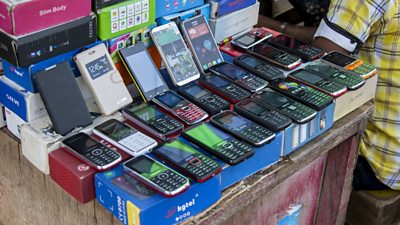Downloads
Publication date: July 2016
Summary
Mobile phone uptake in Sierra Leone has burgeoned making mobiles the most accessed form of communication on a weekly basis alongside radio.
A ±«Óãtv Media Action survey reveals new opportunities for reaching audiences across the country. Radio, continues to be the best way to reach a wide audience because phones are chiefly used to make calls rather than access content.
Context
Sierra Leone has seen notable changes to the mobile and media landscape, but accurate, up-to-date, nationally representative data about how people use and access media and mobile phones has not been publicly available for some years.
±«Óãtv Media Action recognised the need for such data in order to be able to design communication initiatives targeting audiences in Sierra Leone. To improve our understanding of this landscape, ±«Óãtv Media Action, funded by the Paul G. Allen Family Foundation, conducted a nationally representative survey in late 2015.
Research approach
The survey, commissioned to a research agency in Sierra Leone, used a nationally representative sample of 2,499 adults aged 15 and above, drawn from all 14 districts in Sierra Leone, with face-to-face interviews conducted in September and October 2015.
Key findings
- Radio continues to be the most effective media platform for reaching a wide audience. With 81% of Sierra Leoneans having access to radio, it reaches a greater proportion of the population than TV (45%) or the internet (16%).
- Mobile phones are now as accessed as radio, and while 68% of respondents said that they typically listened to the radio at least once a week, some 67% reported having used a mobile phone in the past week.
- The number of radio stations has increased since the turn of the century, particularly of local stations. As a result, radio listenership has become more fragmented. No one station has the capability to reach a national audience on its own.
- Radio and mobile phones are the media with the most evenly represented access across demographic groups and the best to reach women and rural audiences. Eighty-seven per cent of men and 80% of women have access to mobile phones.
- However, gender, location, education and income levels continue to be determinants of access to media, with urban, male, well-educated and better-off audiences able to access more media platforms and more frequently. For example, newspapers and internet primarily reach urban and male audiences.
- Despite rapid growth in access to mobile phones in recent years, there are caveats both to distributing and receiving content by mobile phone. Phones are mainly used for making calls and only 31% use them to send texts. This is compounded by low literacy – particularly in rural and older audiences. Those seeking to use phones for mass communication, therefore, should consider the use of audio content.
- Social media is a small but growing phenomenon, especially among younger audiences in Freetown. Usage is linked to the ownership of smartphones, which make up less than a quarter of all phones owned in Sierra Leone.
Implications and impact
Radio continues to be a dominant platform in Sierra Leone but it has become increasingly fragmented and localised. The use of radio to reach a wide audience therefore requires careful thinking about the combination of stations on which to broadcast.
Access to mobile phones has increased and is reaching a similarly high number of people as radio. There is therefore significant potential in leveraging this reach. It is important to take into account, however, that fewer than a quarter of phones owned in Sierra Leone are smartphones, and that a quarter of all mobile phone users need help to operate them.
Social media can offer great opportunities for the dissemination of information and for interaction with audiences, but these findings suggest that the primary audience of social media content is likely to be relatively small, and mostly consists of young people in the capital.
Further research to investigate how information on social media is disseminated would be valuable.
